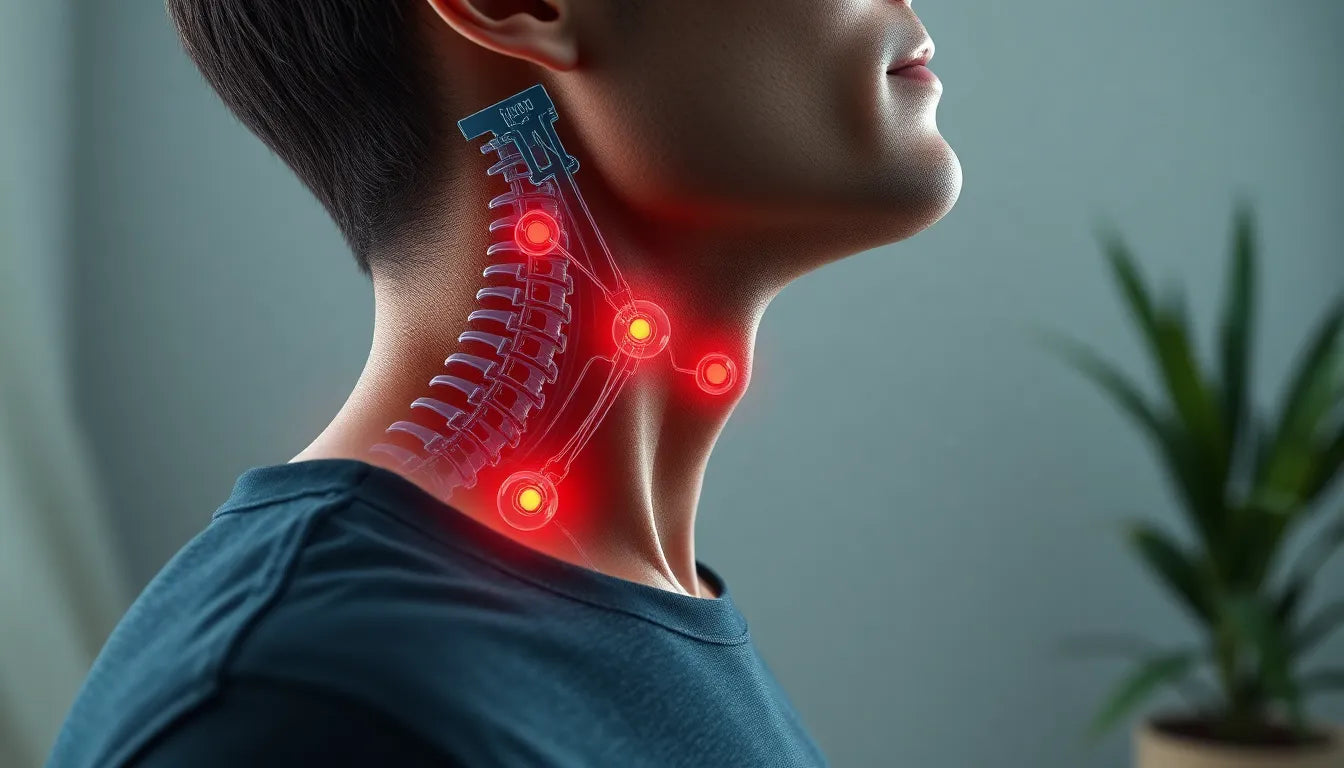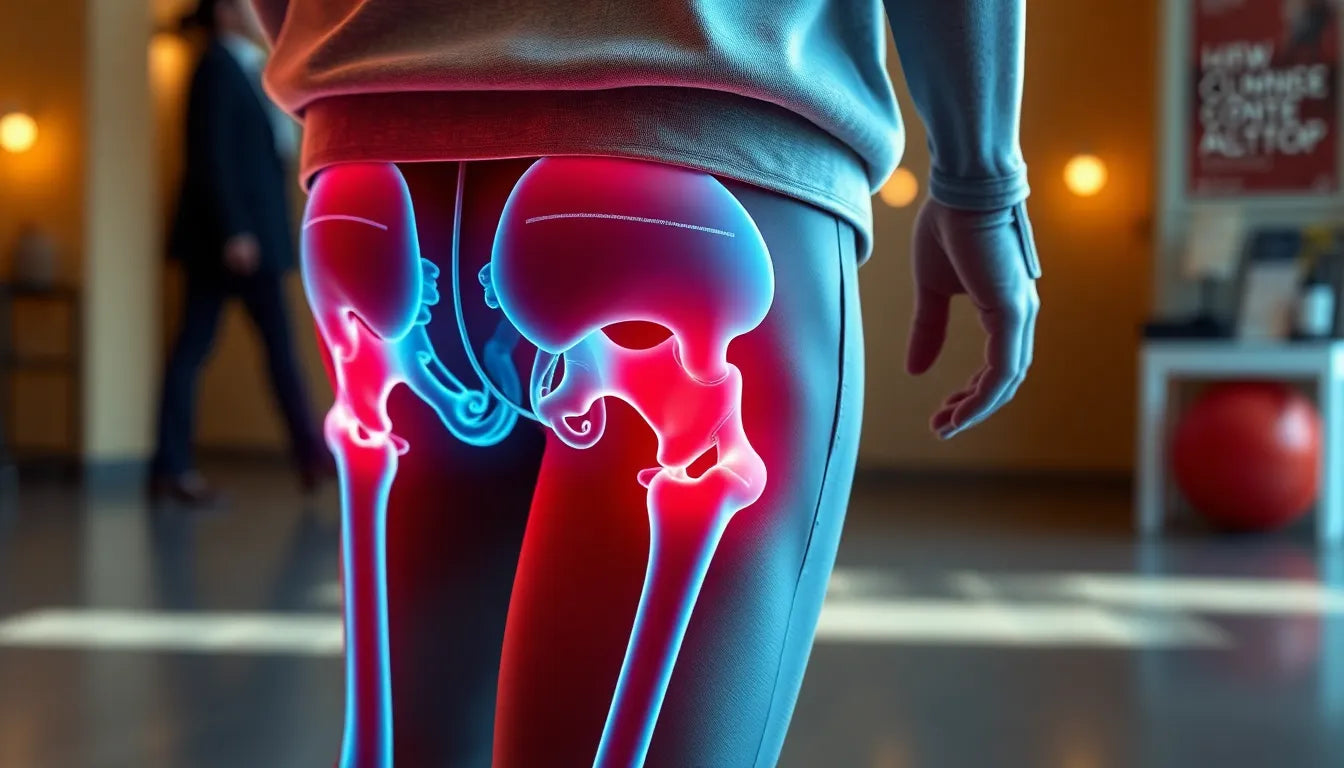Mid-back pain is a common health issue that affects a significant portion of the population, often disrupting daily activities and reducing productivity. This discomfort can range from mild to severe, impacting everything from simple movements to more complex tasks. Whether it's a dull ache or a sharp, stabbing sensation, mid-back pain can make even the most mundane tasks feel challenging. Understanding the causes and potential treatments for this condition is critical for those seeking relief and improved quality of life.
Understanding the complexity of mid-back pain
Mid-back pain is not just a simple ailment; it is a complex issue with a variety of potential causes and symptoms. From musculoskeletal problems like muscle strain and poor posture to more severe conditions such as herniated discs and arthritis, the origins of mid-back pain are diverse. Each cause requires a specific approach to treatment, highlighting the importance of proper diagnosis and management. By understanding the intricacies of mid-back pain, individuals can better navigate their path to recovery.
In addition to musculoskeletal factors, mid-back pain can also be a result of referred pain from internal organs or underlying diseases. This complexity underscores the need for a comprehensive approach to both diagnosis and treatment, ensuring that all potential sources of pain are considered. With a wide range of treatment options available, from home remedies to surgical interventions, individuals have the tools they need to manage their pain effectively.
The purpose of this post
The goal of this post is to provide a comprehensive guide to understanding and managing mid-back pain. We will delve into the various causes and symptoms of this condition, offering insights into effective treatment options and preventive measures. Whether you're seeking relief from current discomfort or aiming to prevent future occurrences, this post is designed to equip you with the knowledge you need to take control of your mid-back health.
By exploring the full spectrum of mid-back pain, from its root causes to the most effective treatments, we aim to empower you with the information necessary to make informed decisions about your health. With a focus on both immediate relief and long-term prevention, this guide serves as a valuable resource for anyone affected by mid-back pain. Stay tuned as we unravel the complexities of this common condition and explore the best strategies for finding relief.
Uncovering the causes of mid-back pain
Mid-back pain can arise from a variety of musculoskeletal factors, each contributing to the discomfort in unique ways. One common culprit is muscle strain, often resulting from poor posture or repetitive overuse. This can lead to tension and pain that hinders everyday activities. Injuries or trauma to the back, such as those sustained in accidents or falls, can also be significant contributors, sometimes causing more acute pain.
Another frequent cause is the presence of herniated or ruptured discs. These conditions occur when the soft material inside a spinal disc pushes out, irritating nearby nerves and leading to pain. Arthritis, including osteoarthritis, ankylosing spondylitis, and rheumatoid arthritis, can also impact the mid-back, causing inflammation and stiffness. Additionally, osteoporosis can weaken bones, leading to fractures that contribute to mid-back pain, while spinal stenosis narrows the spaces in the spine, putting pressure on nerves.
Degenerative disc disease, a condition where discs lose their cushioning ability, can exacerbate pain, as can fibromyalgia, a disorder characterized by widespread musculoskeletal pain. Beyond musculoskeletal issues, mid-back pain can sometimes be referred pain from internal organs or underlying diseases, adding another layer of complexity to diagnosis and treatment.
Recognizing symptoms of mid-back pain
Understanding the symptoms associated with mid-back pain is crucial for effective management. Common symptoms include localized or radiating pain, which can vary in intensity and duration. Stiffness and a reduced range of motion are also prevalent, often making simple movements challenging. Muscle spasms may occur, adding to the discomfort, while numbness or tingling sensations can indicate nerve involvement.
In some cases, individuals may experience difficulty breathing or chest pain, symptoms that warrant immediate medical attention. The process of diagnosing mid-back pain typically begins with a thorough medical history and physical examination. Depending on the findings, imaging tests such as X-rays, MRIs, or CT scans may be recommended to get a clearer view of the spine and surrounding structures. Blood tests might also be conducted if an underlying disease is suspected.
Exploring treatment options for mid-back pain
Once the cause of mid-back pain is identified, a range of treatment options can be considered. For many, home remedies provide effective relief. Applying heat or ice to the affected area can reduce inflammation and soothe discomfort. Over-the-counter nonsteroidal anti-inflammatory drugs (NSAIDs) are often used to manage pain, while correcting posture and engaging in rest and gentle stretching can aid recovery.

Men's Posture Shirt™ - Black
A posture-correcting shirt activating muscles and helping relieve back and neck pain.

Women's Posture Shirt™ - Black
Supportive shirt with patented technology for posture correction and pain relief.
Yoga and strengthening exercises are beneficial for improving flexibility and supporting the spine. When home remedies are insufficient, medical management may be necessary. Prescription medications can offer stronger pain relief, while physical therapy and chiropractic care can help restore movement and function. In some cases, steroid injections may be used to reduce inflammation, and minimally invasive procedures like facet or trigger point injections can target specific sources of pain.
For severe or structural cases, surgical interventions might be required. Procedures such as laminectomy, laminotomy, or discectomy are options for those with persistent pain that does not respond to other treatments. Alternative therapies, including acupuncture, massage, and spinal manipulation, can also complement traditional treatments, providing additional avenues for relief.
By understanding the various causes, symptoms, and treatment options for mid-back pain, individuals can take proactive steps towards managing their condition and improving their quality of life. Whether through home remedies, medical management, or alternative therapies, there are numerous strategies available to alleviate discomfort and promote long-term spinal health.
Preventing mid-back pain through lifestyle changes
Preventing mid-back pain is as crucial as managing it, and lifestyle adjustments play a significant role in this endeavor. Maintaining a healthy weight is fundamental, as excess body weight can strain the back muscles and spine. Regular exercise is equally important, not only for weight management but also for strengthening the muscles that support the back. Incorporating exercises that focus on core strength and flexibility can enhance spinal support and reduce the risk of injury.
Proper posture is another key factor in preventing mid-back pain. Whether sitting at a desk or standing for extended periods, maintaining a neutral spine alignment is essential. Ergonomic workspaces can greatly contribute to this, with desk chairs that support the natural curve of the spine and computer monitors positioned at eye level to prevent slouching. Simple adjustments in daily routines can have a profound impact on spinal health.
Exercise and physical therapy for mid-back health
Exercise and physical therapy are vital components of both prevention and treatment strategies for mid-back pain. Tailored exercises that focus on strengthening the back muscles can provide lasting relief and prevent future episodes of pain. Physical therapists can guide individuals through specific routines that improve flexibility, enhance posture, and alleviate tension in the back muscles.
Engaging in regular physical activity not only promotes overall health but also helps maintain muscle tone and endurance, which are crucial for supporting the spine. Activities such as swimming, walking, and yoga are excellent for maintaining back health without placing excessive strain on the spine. Consistent exercise routines, when combined with professional guidance, can significantly reduce the risk of recurrent mid-back pain.
When to seek medical attention for mid-back pain
While many cases of mid-back pain can be managed with home care and lifestyle changes, certain symptoms require immediate medical attention. Red flag symptoms include severe, sharp, or radiating pain that does not improve with rest or over-the-counter medications. The presence of fever, unexplained weight loss, or numbness in the limbs can indicate more serious underlying conditions.
Additionally, if mid-back pain is accompanied by loss of bladder or bowel control, it is crucial to seek medical evaluation promptly. These symptoms could signify a medical emergency, such as spinal cord compression. Consulting a healthcare professional can ensure a comprehensive assessment and appropriate intervention, preventing further complications.
Frequently Asked Questions
What are the most common causes of mid-back pain?
The most common causes of mid-back pain include muscle strain from poor posture or overuse, injuries, herniated or ruptured discs, and various forms of arthritis such as osteoarthritis and rheumatoid arthritis. Conditions like osteoporosis and spinal stenosis can also contribute, as well as fibromyalgia and, less commonly, referred pain from internal organs.
How can I relieve mid-back pain at home?
Home remedies for relieving mid-back pain include applying heat or ice to the affected area, taking over-the-counter NSAIDs, and practicing posture correction techniques. Rest and gentle stretching can also help, along with yoga and strengthening exercises to support the spine.
When should I see a doctor for mid-back pain?
It is advisable to see a doctor if you experience severe, sharp, or radiating pain that persists despite home treatment. Other red flag symptoms include fever, unexplained weight loss, numbness in the limbs, or loss of bladder or bowel control, as these may indicate a more serious condition.
What treatments are available for chronic mid-back pain?
Treatments for chronic mid-back pain range from medical management, including prescription medications and physical therapy, to alternative therapies like acupuncture and massage. In some cases, minimally invasive procedures or surgery may be recommended for persistent or structurally-caused pain.
How can I prevent mid-back pain from recurring?
Preventing mid-back pain involves maintaining a healthy weight, engaging in regular exercise, and practicing good posture. Setting up an ergonomic workspace and incorporating exercises that strengthen the back muscles into your routine can also help prevent recurrence.
Kilder
- Healthline. (n.d.). "Middle Back Pain: Causes, Symptoms, and Treatment."
- University Spine Center. (n.d.). "Mid-Back Pain."
- ColumbiaDoctors. (n.d.). "Upper and Middle Back Pain."
- WebMD. (n.d.). "Why Does My Middle and Upper Back Hurt?"
- Dignity Health. (n.d.). "Middle Back Pain."
- MyHealth Alberta. (n.d.). "Back Pain: Overview."
- Cleveland Clinic. (n.d.). "Back Pain: Symptoms & Causes."
- Mayo Clinic. (n.d.). "Back Pain: Symptoms & Causes."
- University of Maryland Medical System. (n.d.). "Spine: Signs & Symptoms."


















